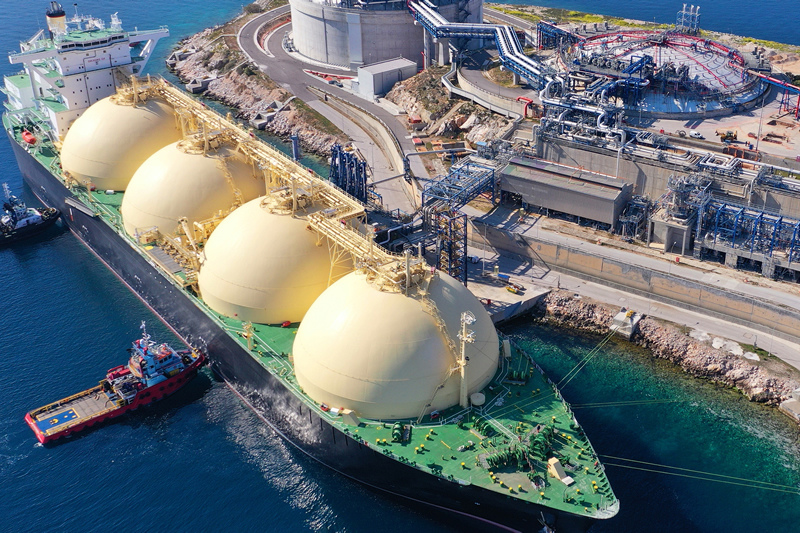LNG Retrofit Market Sees Revival Amid Regulatory Pressures
19
In 2024, a notable development in the maritime sector was the renewed interest in LNG retrofits, driven by shipowners seeking immediate carbon reduction solutions to meet tightening regulatory demands. Over 305 LNG-fuelled vessels were ordered last year, representing roughly 14% of global newbuild orders and significantly outpacing alternatives like methanol and ammonia.

In 2024, a notable development in the maritime sector was the renewed interest in LNG retrofits, driven by shipowners seeking immediate carbon reduction solutions to meet tightening regulatory demands. Over 305 LNG-fuelled vessels were ordered last year, representing roughly 14% of global newbuild orders and significantly outpacing alternatives like methanol and ammonia.
Although LNG offers a viable near-term compliance pathway, the report cautions that deeper decarbonization efforts will be required in the longer term. Persistent challenges include methane slip and uncertainties around the availability of bio- and e-LNG. Still, with zero-emission fuel infrastructure in early stages of development, many operators view LNG as the most practical retrofit solution currently available.
Supply chain readiness remains a key concern. The report highlights that without improved collaboration among engine manufacturers, fuel system providers, and shipyards, conversion lead times could exceed 18 months. Recent amendments to the MARPOL Annex VI NOx Technical Code are expected to ease certification hurdles for converted engines, offering some regulatory relief.
Another constraint is the limited number of shipyards equipped to handle alternative fuel conversions. While the number has grown to about 16, primarily in China and the Middle East, current global capacity supports only around 465 vessel retrofits annually, well below the anticipated peak demand of more than 1,000 conversions per year.
Despite a modest pace of retrofit orders in 2024, engine designers are actively preparing for rising future demand. The shorter lead time of retrofit projects compared to newbuilds suggests that more retrofits, targeted for completion in 2026 and 2027, may be announced as early as 2025. LNG (liquefied natural gas) reduces shipping emissions primarily by replacing traditional marine fuels like heavy fuel oil (HFO), which are more carbon-intensive. Here's how LNG helps cut emissions:
- Lower CO2 Emissions
- Up to 20-25% reduction in CO2 emissions compared to HFO.
- LNG has a higher hydrogen-to-carbon ratio, resulting in less carbon dioxide per unit of energy when burned.
- Virtually Eliminates Sulfur Oxides (SOx)
- LNG contains almost no sulfur, so it virtually eliminates SOx emissions - a major cause of acid rain and respiratory problems.
- This helps ships comply with IMO's 0.5% global sulfur cap and emission control area (ECA) regulations.
- Significantly Reduces Nitrogen Oxides (NOx)
- When used in low-pressure dual-fuel engines, LNG can cut NOx emissions by up to 90%.
- This helps meet Tier III NOx regulations in ECAs.
- Particulate Matter (PM) Reduction
- LNG combustion produces far fewer particulates than HFO or marine diesel oil (MDO).
- Lower PM emissions are beneficial for both air quality and human health.
In Summary
LNG can significantly lower local air pollutants and reduce greenhouse gas emissions, making it a practical near-term option for shipping decarbonization. However, its role in a net-zero future depends on managing methane slip and scaling up renewable LNG alternatives.
#Protea #Emissions #Monitoring #CEMS #FTIR #Gas #Analysers #Shipping #Marine #Carbon #Capture
Other Articles
Global Underground CO2 Storage Data Offers Hope Amid Rising Emissions
01
IMO Postpones Adoption Of Global Net-Zero Shipping Framework
04
Pioneering Carbon Capture Projects Ready For Construction
03
Methanol & Ammonia Deemed Ready As Zero-Emission Shipping Fuels
01
Carbon Capture Storage Reaching A Turning Point In Decarbonisation
13
CCS To Capture 15% Of Shipboard Carbon Emissions By 2050
29
Global Shipping Industry Struggles To Navigate Net Zero Transition
21
Carbon Capture Surges as Economics Policy & Industry Demand Align
14
GHG Emissions At Ports On The Rise Despite Initiatives
07
Carbon Capture Utilisation & Storage In A Nutshell
30